Did you know that escalators in Moscow transport up to a billion people daily? It is interesting that this device was invented more than a hundred years ago, and its design has not changed globally to this day.
Let’s learn more about the history of escalators today, see how they work and understand why they are often at least one line is down.
Briefly
How Escalators Were Invented
How does an escalator work?
The appearance of escalators in the metro
Modern history of escalators
Interesting facts about escalators
One escalator is ALWAYS not working, why
How Escalators Were Invented and What Does Luna Park Have to Do With It?

So, on March 15, 1892, American Jesse Wilford Reno patented his invention of the “inclined elevator”, which can be translated as “inclined lift”. And two years later, the device developed under this patent was created in New York’s Coney Island Park as an attraction for tourists.
The entertainment was given the name “Renault’s Inclined Lift”.
Interesting fact: the idea of creating an escalator appeared even earlier, in 1859. Then the American Nathan Ames from Michigan invented a machine that was called a “reversing wall” and even received a patent for it under number 26076. Ames did not have time to bring his idea to life due to his death in 1860. So it is not he who is considered the inventor, but Reno.
According to some reports, 75,000 people rode Jesse Wilford’s ribbon in two weeks, lifting them 2 meters. Everyone who dared to ride was given a shot of whiskey at the top.
 The world’s first prototype of an escalator was actually very different from what we are used to. The first American escalator had no steps, being a simple moving smooth path, and people moved along it sitting on the “railings”.
The world’s first prototype of an escalator was actually very different from what we are used to. The first American escalator had no steps, being a simple moving smooth path, and people moved along it sitting on the “railings”.
The story takes us to Paris in 1900. It was there, at the World Fair, that the first working “Escalade”, or “Assault Ladder” if translated from French, was presented.
The interesting fact is that this development had nothing to do with Renault’s patents, but was invented by George Wheeler as a concept for a moving staircase. It was Wheeler who designed the steps instead of the danger.
However, all rights and patents were bought by the inventor Charles Seeberger, who worked for the Otis Elevator Company, the latter still retains its role in the history of the device.
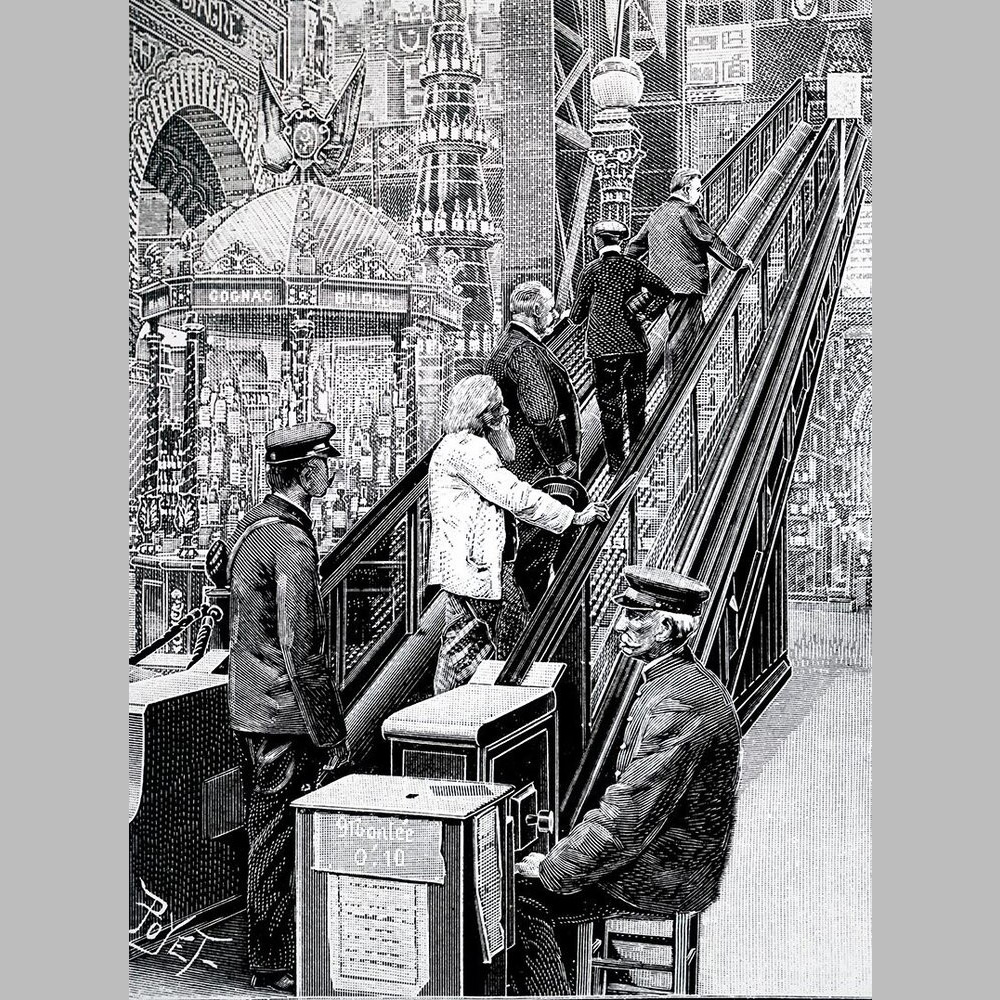 The only image of “escalade”. It does not show any modern escalators left.
The only image of “escalade”. It does not show any modern escalators left.
Where did the name Escalator come from? In addition to Seeberger and Wheeler, the Otis Elevator plays an important role in the history of modern escalators.
It was this company that registered the Escalator trademark and launched the production of stairs.Between 1900 and 1920, about 350 machines were installed in America and Europe, mostly in universities and government agencies.
◦ Back to Contents ◬
How does an escalator work?


The principle of operation of the escalator is elementary – the steps of the escalator are a looped belt. When a person stands on its outer part, the inner part moves under him. The relief steps were invented, first of all, so that the mechanism does not get even the smallest debris.
There is also a non-obvious moment in the handrails. They move slightly faster than the steps, due to the slightly increased size of the drive unit.
And now it’s time to finally reveal the secret: why do the handrail and steps of an escalator move at different speeds.
The thing is that the speed of the escalator handrail depends on the drive unit, and the speed of the stairway depends on the electric motor. The unit gradually wears out due to friction, so the speed of the handrail changes.
If the drive unit is new, then it should move faster than the steps, and if the unit is worn out and it is time to change it soon, then it should move slower than the steps.
◦ Back to Contents ◬
The appearance of escalators in the metro
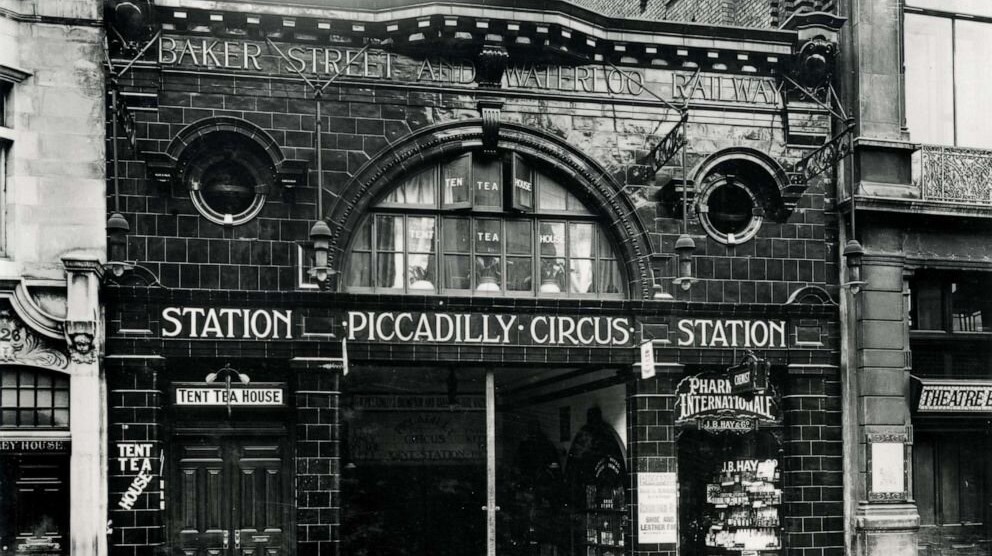
Entrance to Piccadilly Circus tube station, London.
The very first escalator appeared in the underground in 1911 at Piccadilly station in London. There were some interesting cases: at first, people were afraid to use the dangerous-looking device, and in order to convince them otherwise, they had to hire a special person who showed how safe and convenient the escalator was to use.
In our country escalators were presented at Moscow’s industrial fair in the spring of 1914. The new product attracted interest, but its use was too expensive and irrational, because there was no metro yet.
Escalators were talked about again in the 1930s, when the Moscow metro was being built. The first metro line was located at a depth of up to 30 meters, and it was clear that it would be impossible to do without lifting and lowering passengers.
However, the production of escalators was classified, and huge sums were demanded for technical documentation and drawings. In addition, foreign escalators could only rise to a height of 18 meters, while the Moscow metro needed machines with a lifting height of about 30 meters.
Then it was decided to create escalators ourselves.
 The pride of the young Soviet Union is the Krasny Metallist plant. It was here that the first domestic escalators were created. Interestingly, the plant’s designers relied only on advertising brochures for foreign escalators and stories from people who had had the chance to ride them to create their first models.
The pride of the young Soviet Union is the Krasny Metallist plant. It was here that the first domestic escalators were created. Interestingly, the plant’s designers relied only on advertising brochures for foreign escalators and stories from people who had had the chance to ride them to create their first models.
So, on January 31, 1935, the first Soviet escalator (model N-30, chief designer – M.M. Andrianov) was launched at the Krasnye Vorota station.
It is noteworthy that our escalators were structurally superior to Western ones in all respects.
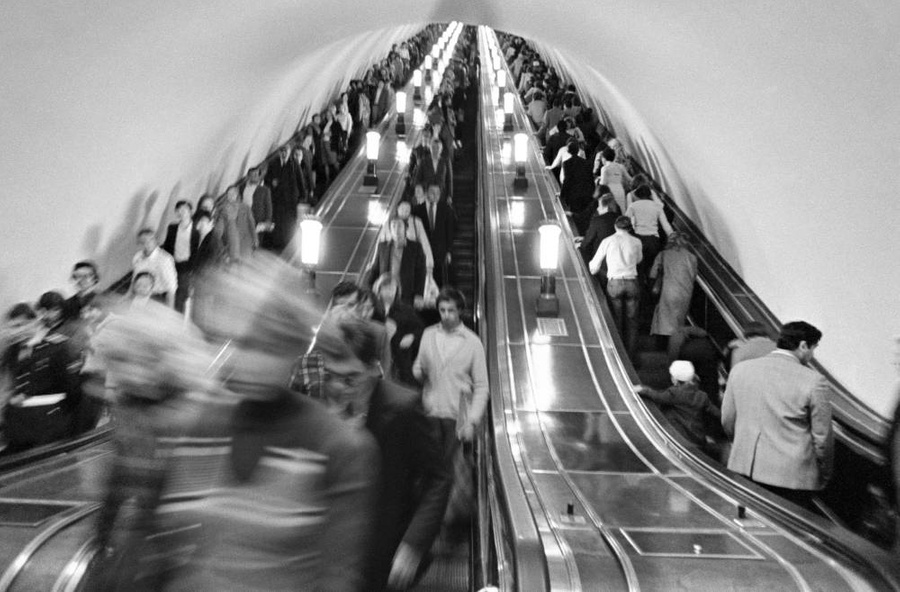
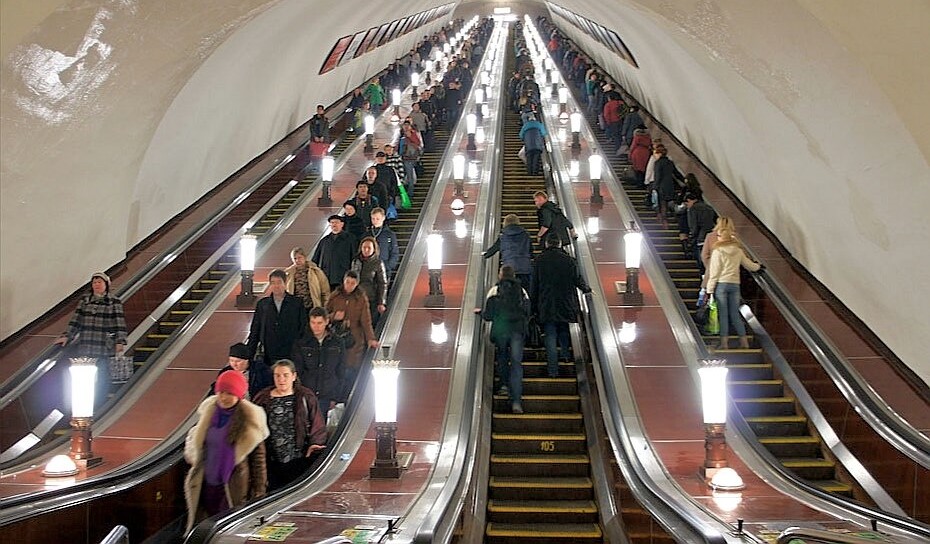
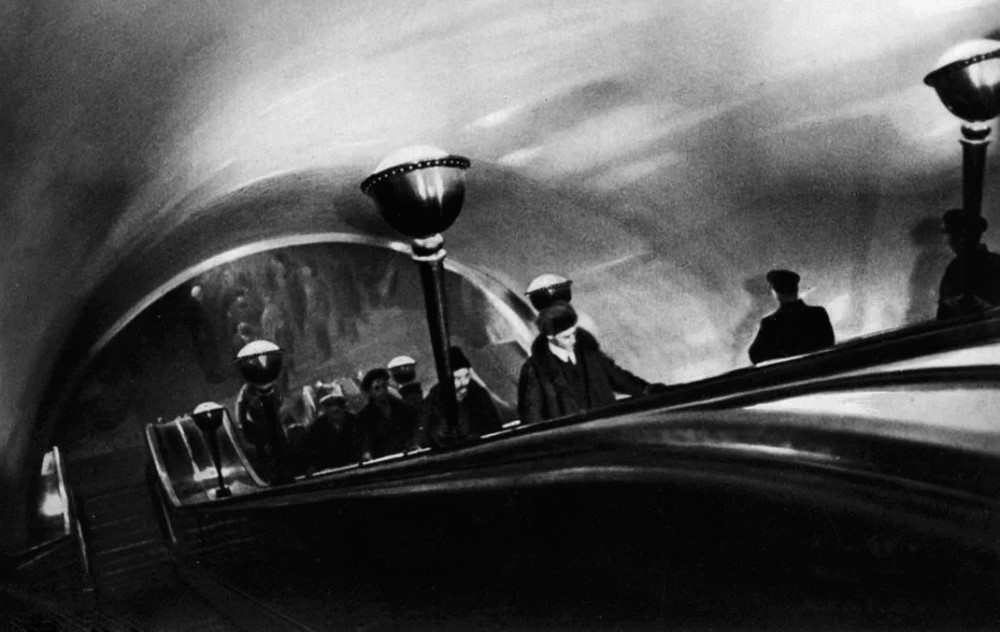
The speed of the first escalators determined 0.75 m/swhile foreign ones had a lower speed – 0.5 m/s.
And at that time, Soviet escalators were world-famous people all over the world.
◦ Back to Contents ◬
Modern history of escalators
 Classic view of modern shopping centers (TC, hereinafter referred to as)
Classic view of modern shopping centers (TC, hereinafter referred to as)
In the modern world, escalators have become an integral part of large shopping centers, subway stations and even some industrial buildings. And our country is no exception.
In Vann’s design, shopping malls have one trick: escalators are usually located at different ends of the mall corridor, with shops between them. Walking between the stairs, visitors often look into at least one shop along the way.
There are several types of escalators at the moment. For example, stair escalators are the oldest type of escalators. As the name suggests, they are built into the stairs.

An example of the simplest stair escalator
Another interesting type of escalator is the curved one. These escalators are usually found in airports, shopping malls, universities and other public places.
The advantage of curved escalators is that they allow for much more efficient use of space than straight escalators.

This is what the first curved escalator in the US looks like. It is located in San Francisco
◦ Back to Contents ◬
Interesting facts about escalators
📍 After the first escalator was successfully introduced in London, newspapers could be found with stories like “Passengers on their way to the City were seen getting off the train, going up the escalator, then going down and getting on the next train.”
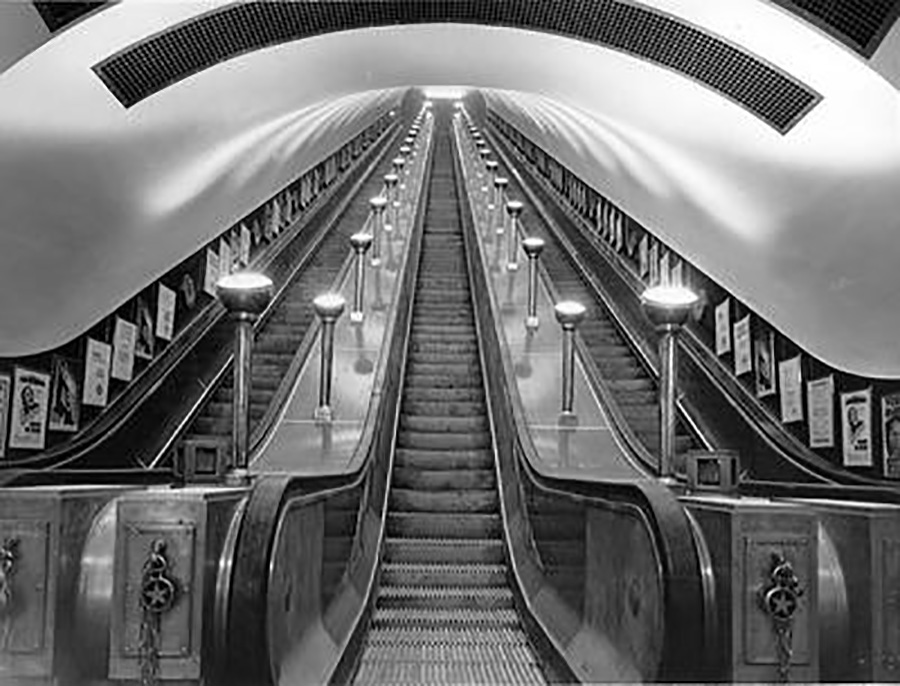 This is the escalator that was written about in the newspapers
This is the escalator that was written about in the newspapers
📍 The shortest escalator in the world is located in the basement of a department store in the Japanese city of Kawasaki – 5 steps and 83.4 cm in height.
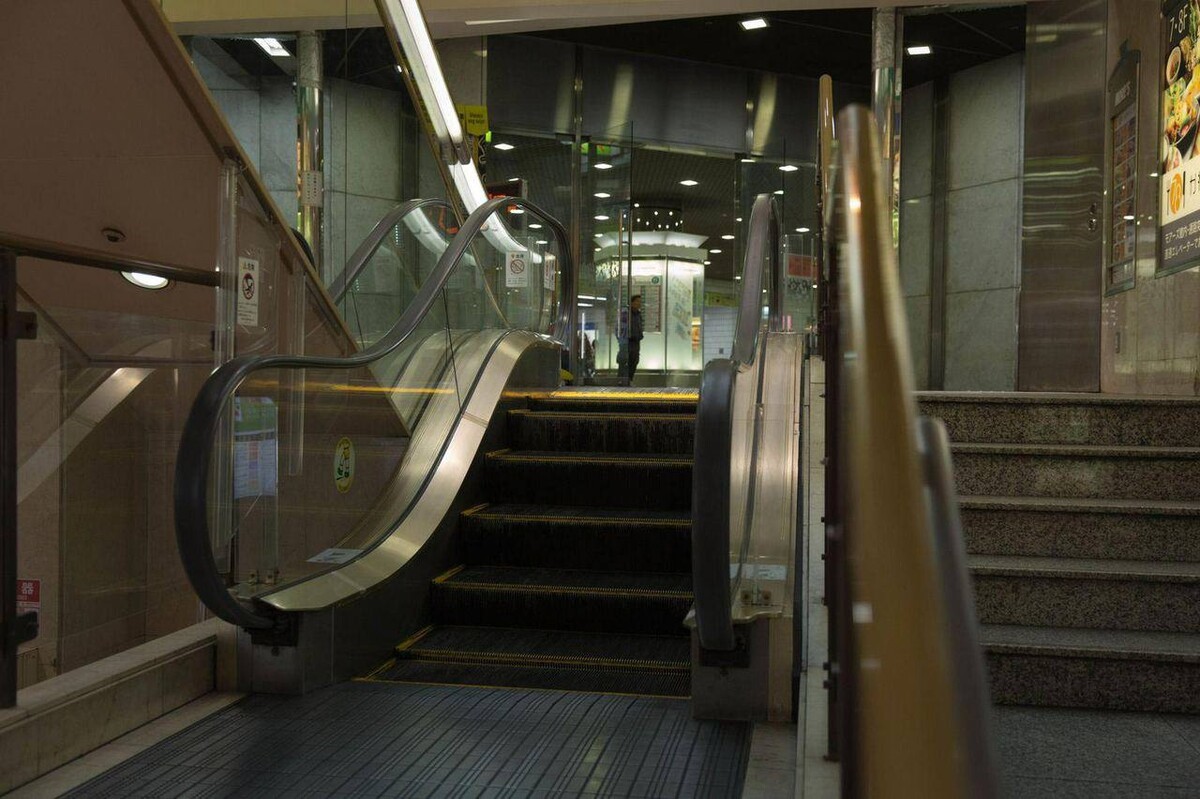 In 1989, it was listed in the Guinness Book of Records as the most useless in the world.
In 1989, it was listed in the Guinness Book of Records as the most useless in the world.
📍 And here is the longest escalator we have. It is installed at the Moscow metro station “Park Pobedy”. The length of this escalator is almost 130 m, in the lower part it is developed at a depth of 68 m.
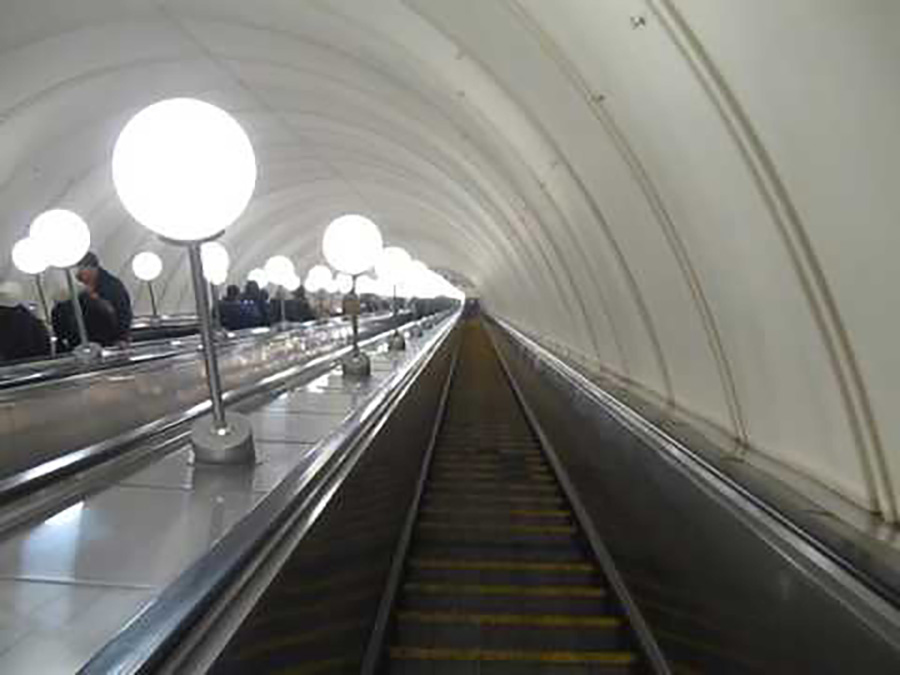 There was already a competition for the title of the longest in Hong Kong, but our “Victory Park” turned out to be the longest of all.
There was already a competition for the title of the longest in Hong Kong, but our “Victory Park” turned out to be the longest of all.
◦ Back to Contents ◬
One escalator is ALWAYS not working, why
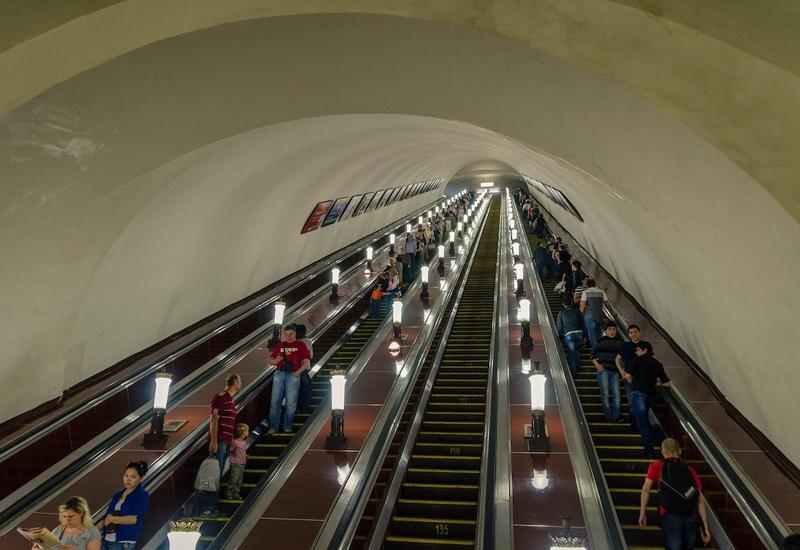 Metro station “28 May”. There are few people, but one escalator is not working.
Metro station “28 May”. There are few people, but one escalator is not working.
Imagine: rush hour, metro, crowd of people. And then you see an empty escalator, which, it would seem, should work. But it does not.
In fact, there is an explanation for this situation. The escalator line that is always out of order can be due to three reasons.
FirstlyIt is necessary to have a reserve in case the main escalators break down. Otherwise, it will be very difficult for people to move around and exit the metro.
SecondlyThis is due to safety reasons. If all four escalator lines were to be turned on at the same time (for example), the station would immediately fill up with people and it would become impossible to move around it.
 This case was indeed hushed up. A short message in the newspaper and that’s all.
This case was indeed hushed up. A short message in the newspaper and that’s all.
ThirdThis is already from the category of my personal guesses, no one wants a repeat of 1982, when at least 8 people died due to the failure of the mechanism of one escalator at the Aviamotornaya station.
At that moment, all the lines were turned on and the brakes did not work, the descent speed increased by 2.4 times. In 2 minutes, 8 people died, and about 30 were injured. Many remained disabled for life.
◦ Back to Contents ◬
conclusions
On this optimistic note, we conclude our article. We have looked at the history of escalators and learned how they ended up in our days. Hopefully, now you have a better understanding of how they work and will be able to answer questions from other passengers of the Moscow metro.
Thank you for your attention! Have a nice day!
◦ Back to Contents ◬
Source: Iphones RU
I am a professional journalist and content creator with extensive experience writing for news websites. I currently work as an author at Gadget Onus, where I specialize in covering hot news topics. My written pieces have been published on some of the biggest media outlets around the world, including The Guardian and BBC News.











